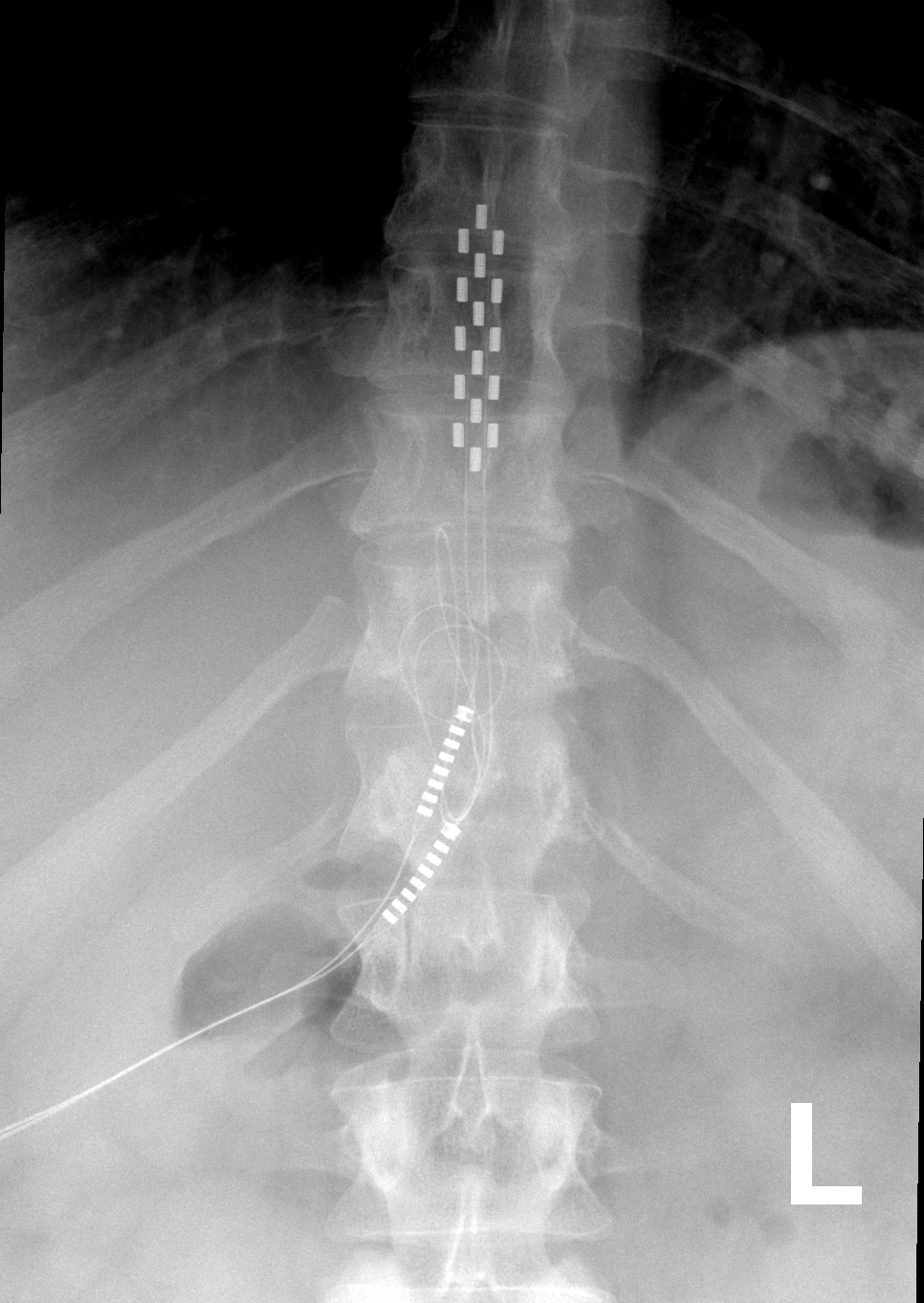As a follow up to yesterday's post, I would like to share an example-- how early interventions to treat pain at the source make good sense.
 |
| Thoracic placement of spinal cord stimulator image source: wikimedia |
Spinal cord stimulators are medical devices that have been in existence since the late 1960s-early 1970s.
When a patient has chronic back pain, a device like this can be surgically implanted ..the actual device sits in the abdomen, while the electrodes are placed in the epidural space of the spine. Once activated, the device sends electrical impulses that scramble the pain signal, and in doing so, muffle the pain sensation for that patient. The device is programmable, so that it the signals it emits can be adjusted after implantation as needed by the patient's health care team.
A recent study at Regina General Hospital in Saskatchewan regarding these devices yielded some interesting results. Krishna Kumar, MD and his group studied 443 patients who were using these devices. Seventy five percent of patients who waited 2 years or less for stimulator implants had a 75 % success rate. Those who received implants 20 years or more after onset of chronic pain showed a mere
15% success rate.
Keep in mind that not every candidate with chronic back pain is a good candidate for this device. Other issues, such as specific diagnoses, insurance coverage, psychological issues, and other underlying health conditions may prevent patients from being considered for the procedure. But when a patient is a good candidate for this treatment, and the timing is right, the odds of success are good. And, as the study suggests, sooner is better than later.
Sources: wikimedia, americannewsreport.com,wikipedia
Comments
Post a Comment